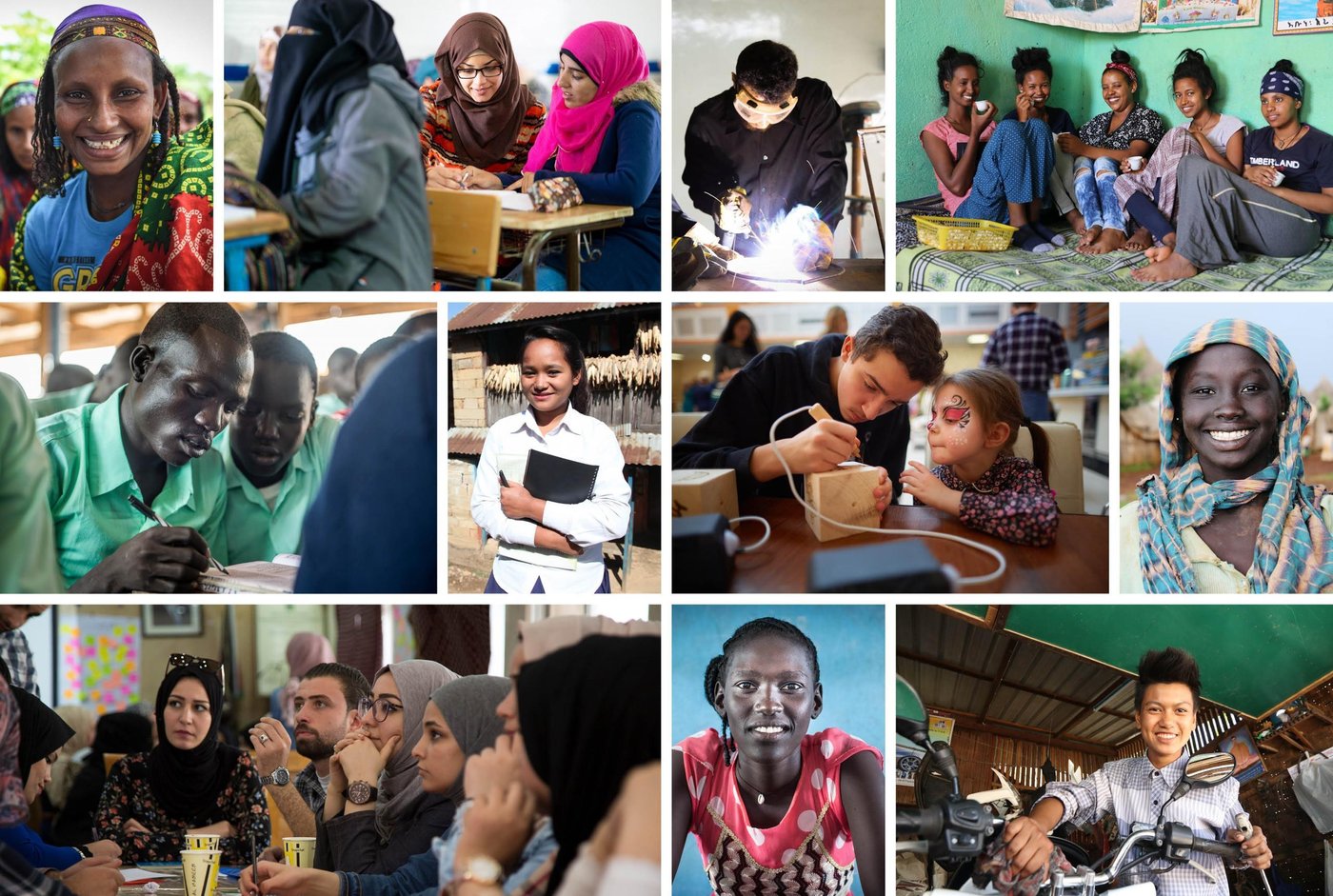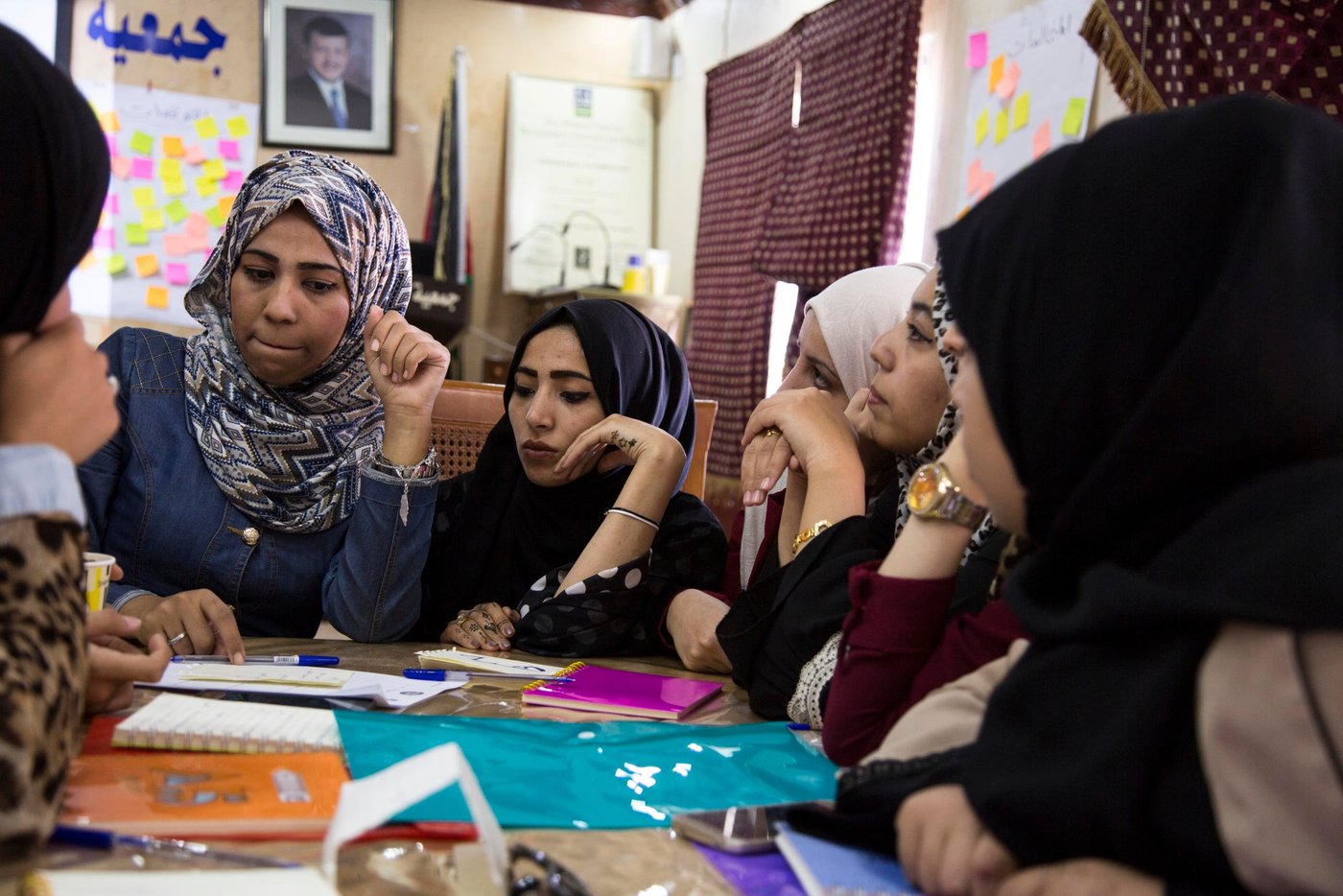“Aid workers come and speak to us about our views and then we hear nothing,” said one displaced youth from Jalalabad, Eastern Afghanistan. “We have really little experience talking in public or voicing our opinion,” explained another. “We have waited so long to be listened to,” said a third.
These are just a few of the comments of the young people who took part in a global consultation in November last year. Their views have helped to shape a new vision for how to involve youth in humanitarian aid work – and new guidelines for aid organisations around the world.
The guidelines, created by the Norwegian Refugee Council (NRC) and UNICEF, are built on the idea that when a crisis hits, young people have the right to be part of the response. Not only that, but their ideas and energy can make all the difference.
But why has this group of people – potentially such an asset – been ignored for so long?

Beacons or threats?
On 25 February 2020, a historic meeting took place. Greta Thunberg, the young climate activist, met Malala Yousafza, who famously campaigned for girls’ education in Pakistan and was shot by the Taliban when she was just 14. The world’s media celebrated the meeting of these two iconic young women, with the Global Citizen describing them as “beacons that can help guide us towards hope”.
One year later, in February 2021, a 16-year-old boy labelled “Britain’s youngest terrorist” by the UK press was sentenced to prison for distributing neo-Nazi material. In his sentencing statement, the judge echoed the anxieties of many: “The wider picture revealed in this case – the actions, words and violent extremist mindset of many young teenagers – is deeply concerning.”
These two events illustrate society’s often conflicting attitudes to youth. On the one hand, we see young people as symbols of idealism and hope for “the future”. On the other, we fear them as a dangerous and unpredictable force that needs to be controlled.
Looking beyond the myths
These attitudes are reflected in the humanitarian world. Youth support is often focused on one of two things: training young people for future (usually blue-collar) jobs or preventing them from being targeted by extremist groups and criminal gangs.
Young people can get involved. During the Ebola crisis, they were the first to be doing things in their community – before we ‘old folk’ arrived!Sophia Kousiakis, NRC’s global youth specialist
Sophia Kousiakis is NRC’s global youth specialist and one of the authors of the new guidelines. She is keen to challenge the prejudices that exist around youth.
“There’s this myth about young people: if you’re a young man you’re idle, sitting on a corner, and could be a potential threat, and if you’re a young woman you’re vulnerable and need to be protected from everything,” she says. “That’s what we want to tackle.”
NRC believes that, far from being a threat to be managed, young people have huge untapped potential in crisis situations. They have powerful assets: skills, ingenuity, energy, a strong sense of justice and equality. They also have an aptitude for technology and capacity for peer mobilisation.
“Young people can get involved,” Kousiakis enthuses. “After the earthquakes in Haiti and Nepal, and during the Ebola crisis, they were the first to be doing things in their community – before we ‘old folk’ arrived!”
Yet, young people remain marginalised in humanitarian responses, with their concerns unheard and their needs rarely prioritised.
“Youth have no natural home in the humanitarian system. Child protection looks at under-18s, then the rest of the target group is 18 to 60,” says Kousiakis.
It is not only participation that is expected from us, but also we need to have programmes that are run by the young peopleA young refugee in Ethiopia
Programmes run by youth, for youth
To be truly inclusive, aid organisations must move beyond simply providing services for young people. The authors of the new guidelines consulted 500 young people from more than 20 countries around the world to get their views.
Kousiakis explains: “We listened to what young people wanted us to hear. We learned a lot about getting them engaged, not just about their inclusion but actually getting them involved.”
One young refugee from Ethiopia said it simply: “It is not only participation that is expected from us, but also we need to have programmes that are run by the young people.”
Here are just a few examples of how young people are making a difference.

Youth can transform their communities
When we met David, 22, last year, he was living in a refugee settlement in Uganda.
David was forced to flee from South Sudan to Uganda in 2014. Despite his difficult start in life, he completed high school and proceeded to enrol on a computer science course run by NRC.
“The computer skills training course has opened many possibilities,” he says. “I am now enrolling in university. It is very important to have that certificate.”
David has big plans for his home country of South Sudan – a nation still plagued by violence despite achieving independence in 2011.
“My country is not stable in terms of security,” he explains. “There are no good structures or infrastructures. I have a dream of becoming an engineer. We will be the ones to build our country.”

Youth can take on responsibility
Elsewhere in the same settlement, we met Athieng. Like David, she fled violence in South Sudan and sought refuge in Uganda. And like David, she is studying to catch up on the education she missed out on when she was younger.
As a young mother, a student and a refugee, Athieng carries a heavy burden of responsibility. Her school day begins at 8.00 and ends at 16.00. But Athieng’s day is far from over.
“I go and change out of my uniform. I feed my children. After that, I help my mum,” she says.
In 30C heat, Athieng heads out to retrieve water for the family. When she arrives back home, she cooks for the family, helps to clean the family’s plot of land, and gathers firewood.
Athieng hopes to secure a scholarship place at a secondary school and eventually become a nurse and help others. She bears her responsibilities with determination and hope. “When I dream, I dream about my future,” she says.

Youth want to lead normal lives
When thinking about youth, it’s always tempting to focus on the future. But it’s important to remember that young people are people too, with their own day-to-day needs.
To mark International Youth Day in August last year, we spoke to young Syrian refugees in Jordan about what wellbeing means to them.
“My wellbeing is connected to feeling content and confident in what I do,” Hiba, 22, told us. “As a young person, I feel at my best when I am able to pursue my goals and dreams and when I feel supported. I am also very happy when connecting with friends and eating my favourite food.”
Read about what it’s like to be a young refugee in Jordan
Cultural change is needed
We hope that the new youth guidelines will signal a real change in how young people are viewed and treated by aid organisations.
“We need to change the culture of the way we work with and involve youth, and we need donors to support funding for youth-specific interventions,” says Jan Egeland, Secretary General of NRC.
For Egeland, the imperative is clear.
“Youth are speaking to us through these guidelines,” he says. “They’ve identified how we can be accountable and inclusive. If we listen, we can help young people fill their days with something meaningful and remind ourselves to think about their potential, their social and emotional wellbeing, and their right to a dignified life.”
Read “With Us & For Us” – the new guidelines on working with and for young people in humanitarian and protracted crises


